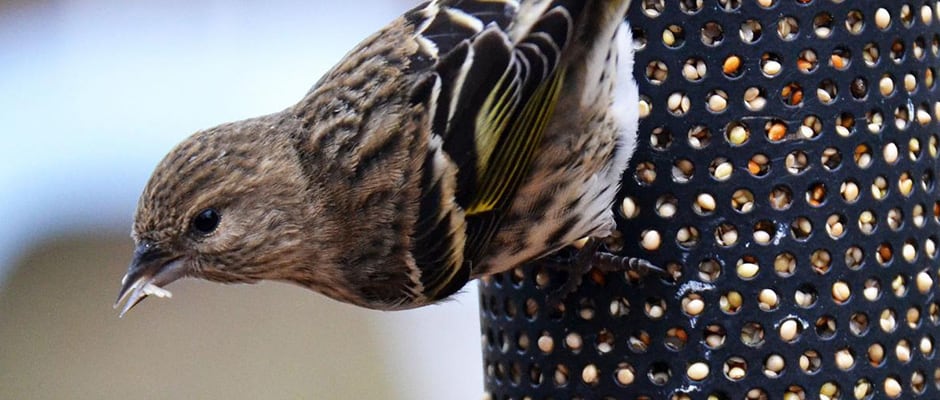Share this article
Northern Birds Pushed South by Climate Fluctuations
Northern bird populations that periodically wind up in southern climes in North America are driven by climate fluctuations that affect the availability of food, according to new research.
Essentially, it’s a “chain reaction from climate to seeds to birds,” said Court Strong, an assistant professor at the University of Utah and lead author of the study released in the Proceedings of the National Academy of Sciences. “This is an explanation we’ve been seeking for a long time as to what causes the irruptions,” he continued. Irruptions are when populations of a species increase rapidly in number beyond their normal range. “It’s been difficult until this paper to find those relations.”
A multidisciplinary team involving climatologists like Strong and bird researchers from the Cornell Lab of Ornithology examined more than two decades of citizen science information about pine siskins (Spinus pinus) from FeederWatch — a program that draws on bird enthusiast counts around feeders to track population numbers. They compared this information with international climate data sets from the European Centre for Medium-Range Weather Forecasts and the Global Precipitation Climatology Centre.
Pine siskins are small birds usually associated with Canada’s boreal forest. They are facultative migrants, a term meaning they move around based on food supply or other factors that don’t always coincide with annual or seasonal migrations. Following these conditions, large populations of the species have been observed turning up in the United States east of the Rocky Mountains.
“You can look in your background one year you might see a pine siskin and then the next year you’ll see a hundred,” Strong said.
While it was often thought the irruptions were caused by climate, Strong and the others examined the data to pinpoint the specific conditions that drive the birds south in certain years.
“The main driving factor is the spring and summer conditions,” Strong said.
But these conditions don’t always have an immediate effect. Instead they tend to affect the reproductive cycle of the trees that produce the seeds the siskins feed on two to three years after. Strong said that while lack of seeds alone may not always be enough to drive the birds south as “pine siskin are relatively hardy birds,” it can combine with harsh winter conditions to cause the irruptions.
Strong said the knowledge of the conditions that cause these birds to come will help researchers predict when future irruptions will occur. This could be used to mitigate potential impacts from pine siskin and other species including the common redpoll (Acanthis flammea) also known to irrupt into the south.
“You can imagine that if people are observing a flock size of a hundred at their feeder, there are many thousands more in the region,” he said. “That would have an impact on the food chain, but what those are we don’t know yet.”
He also said that these irruptions could be impacted on a more long-term level by climate change, which is different from the year-to-year fluctuations of regional conditions.
“Future patterns of climate change may project onto these patterns and influence irruption in an important way,” Strong said.
He said they are planning to look at the common redpoll next to see if the irruptions of the species are caused by similar conditions, and that other studies would also be needed to show what kind of impact the influx of northern birds has on southern ecosystems.
Header Image:
Citizen scientists watching backyard birdfeeders helped scientists pinpoint the climate pattern behind boreal bird irruptions, when vast numbers of northern birds migrate far south of their usual winter range.
Image Credit: Andrew C via Wikimedia Commons








